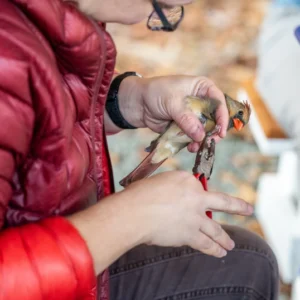Government Forest Report Continues to Mask Industrial Logging’s Impact
OTTAWA | TRADITIONAL, UNCEDED TERRITORY OF THE ALGONQUIN ANISHNAABEG PEOPLE
The federal government’s recently released annual report on forests continues to mask the true state of forest degradation in Canada and fails to measure the climate impacts of industrial logging, a group of leading environmental organizations said today.
Forests in Canada are far more degraded and under threat than the federal government acknowledges. As was the case with its previous reports, Natural Resources Canada (NRCan) paints a misleading picture of forests’ health and sustainability, and fails to hold the logging industry accountable for its impacts on climate, biodiversity and forest communities.
“NRCan’s coverage of maple syrup production is pretty sweet, but its continued failure to track the cumulative impacts of logging leaves a sour taste in the mouth. The federal government reports only on oversimplified deforestation rates while ignoring the critical issue of forest degradation,” said Rachel Plotkin of the David Suzuki Foundation.
The government’s latest report comes two months after environmental groups released their own counter-report exposing the annual report’s omissions and mischaracterizations of the health of forests in Canada. The joint report from Canopy, the David Suzuki Foundation, Nature Canada, NRDC (Natural Resources Defense Council), Sierra Club Canada, Sierra Club BC, Stand.earth and Wilderness Committee cites nearly 200 independent studies that illustrate the cumulative ecological impacts of industrial logging, including the loss of primary and old-growth forests and declining populations of forest-dependent species such as boreal caribou and the endangered spotted owl.
Alongside omissions on impacts to biodiversity and ecosystem integrity, the federal government’s assessment relies on accounting mechanisms that obscure the logging industry’s net carbon emissions and underreports forest regeneration failures tied to logging infrastructure. Its 2023 report released last week also downplays ways in which the forestry industry fails to incorporate Indigenous rights into forest management planning.
“Once again the clear-cut logging of hundreds of thousands of hectares of carbon-rich forests is implausibly depicted as a carbon sink,” said Michael Polanyi of Nature Canada. “This claim is starkly contradicted by peer-reviewed research showing that forestry is one of Canada’s highest-emitting sectors.”
NRCan’s report also references ambitions for Canada’s bioeconomy but fails to acknowledge the harmful impacts that burning forest biomass for fuel has on the climate. Canada’s main entry point into the forest biomass energy sector is exporting wood pellets sourced from forests in Canada to countries such as Japan and the United Kingdom, where they are burned at utility scale in coal-converted plants to generate power.
“Canada has promoted the dangerous mismanagement of forests for many years, but instead of owning up to the impacts of its policies, the Canadian government seems more interested in selling myths aimed at supporting corporate lobbyists,” said Tegan Hansen from Stand.earth. “The latest myth is that burning forest biomass for energy is carbon-neutral, when in reality it’s an archaic, unsustainable practice that often emits more CO2 at the smokestack than coal.”
“Scientific research conducted in different regions across the country shows a concerning shift in forest composition and shortened age classes. These changes, along with fragmentation, as a result of logging, have led to declines in several bird populations,” said Julee Boan from Natural Resources Defense Council. “A report on the state of forests in Canada should focus on the condition of the forests and the outcomes of forest management. There is nothing in the report to help Canadians understand the cumulative impacts of decades of industrial-scale logging.”
“The report claims old-growth forests are being increasingly protected and uses B.C. as an example. However, old-growth in B.C. has continued to be logged at sustained rates of tens of thousands of hectares per year while no forest plans have been enacted that will protect old-growth forests’ said Tobyn Neame, Forest Campaigner with the Wilderness Committee.”
To improve the credibility and relevance of the government’s annual publication, groups reiterated the call for more transparent, comprehensive reporting on the impacts of forestry, including the cumulative effects of logging, rates of forest degradation and loss of primary and old-growth forests, the full carbon emissions attributable to the sector and governments’ performance on respecting Indigenous rights.
30 –
For more information:
Watch the five-part video series breaking down the key findings of the counter-report State of the Forest: Seeing Through the Spin.
Media contacts:
Kathryn Semogas, Canada Communications Specialist, Stand.earth
kathryn.semogas@stand.earth; 778-653-2303 (ET)
Kate Kourtsidis, Communications Specialist, David Suzuki Foundation
kkourtsidis@davidsuzuki.org; 613-806-8184 (ET)
Scott Mullenix, Director of Communications, Nature Canada
media@naturecanada.ca; 613-562-3447 ext. 230 (ET)



